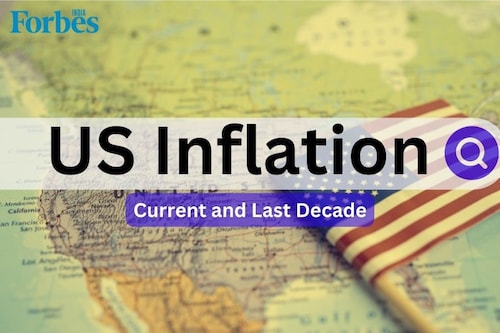US inflation rate by year: 2012 to 2024
Discover a decade of US inflation rate fluctuations and impacts on business cycles. Further, explore the current US inflation rate data


The United States is the world"s largest economy, which means it has a significant impact on global finance as a whole. Inflation in the US can affect the value of the US dollar, which, in turn, can impact exchange rates, international trade, and global investments. This can influence the economic stability and growth prospects of other countries.
Accurate and timely US inflation rate data analysis is crucial for making informed financial decisions and adapting to changing economic conditions.
Although the United States has maintained a consistent inflation rate since the 1980s, inflation reached unprecedented levels in 2021 and 2022 as a consequence of the COVID-19 pandemic.
In December 2021, the yearly US inflation rate data stood at 7.0 percent. This was because of the accommodative policies followed by the Federal Reserve in response to the economic challenges posed by the pandemic. Factors such as supply chain disruptions, increased consumer demand, and rising energy prices also played a role in this inflationary trend.
However, as the year progressed, the Fed began tapering its stimulus measures, gradually dampening inflationary pressures. Inflation decreased to 6.5 percent by the conclusion of 2022.
In July 2023, the inflation rate in the United States stood at 3.18 percent. This figure increased to 3.67 percent in August as of September 2023, the current US inflation rate stands at 3.70 percent.
By January 2024, the US inflation rate had fallen to 3.1 percent. It rose to 3.2 percent and 3.5 percent in February and March, when it reached the year’s highest mark. However, in April, it came down to 3.4. It was 3.3 percent in May 2024. The June 2024 CPI fell by 0.1 percent month-over-month and rose by 3.0 percent year-over-year. It rose 0.2 percent M-o-M and 2.9 percent year-over-year Y-o-Y owing to shelter inflation which rebounded from June, up 0.4 percent.
Over the past decade, the United States has experienced dynamic shifts in its inflation landscape. The country has navigated through periods of both subdued and heightened inflation, from the aftermath of the 2008 financial crisis to the difficulties posed by the COVID-19 pandemic, the Russian invasion of Ukraine, and the Israel-Gaza conflict.
First Published: Aug 28, 2024, 18:24
Subscribe Now